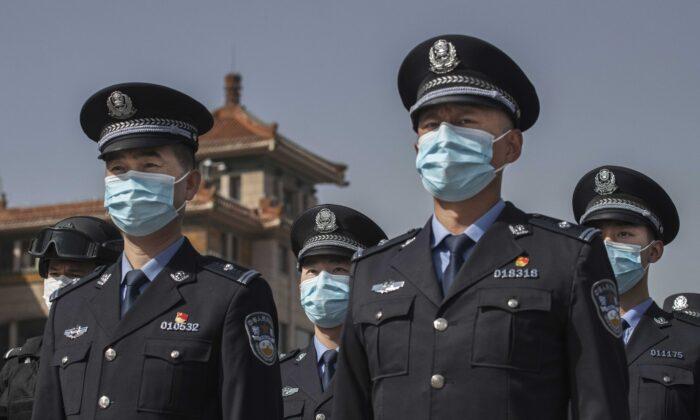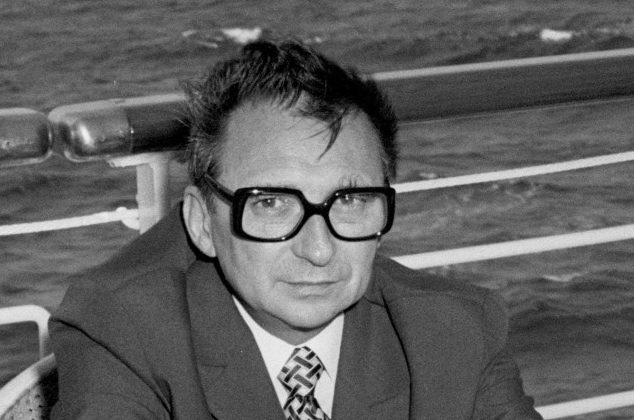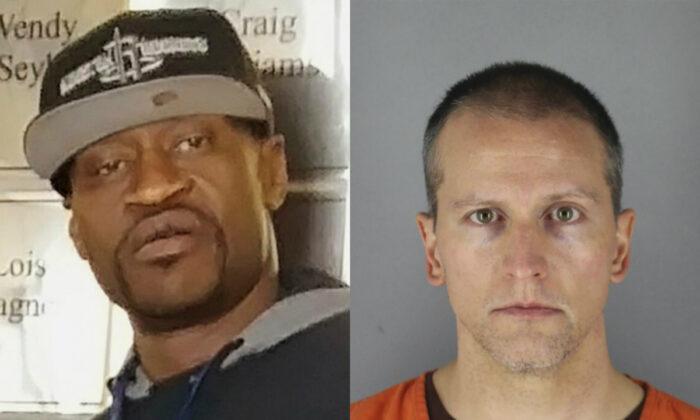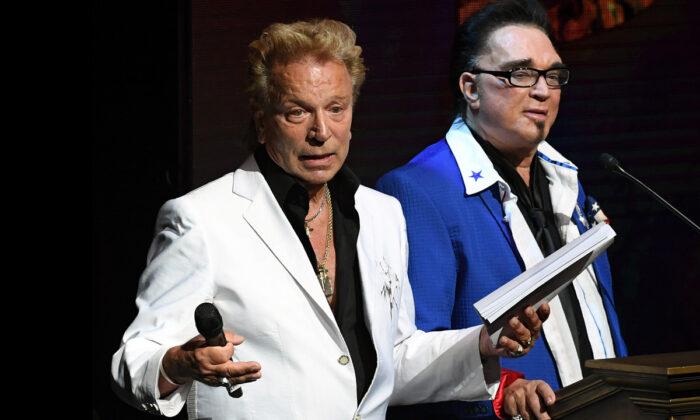Commentary
A lot of ink has been expended trying to assign blame for the spread of COVID-19.
While most people now acknowledge that the
CCP (Chinese Communist Party) virus, commonly known as novel coronavirus, originated in Wuhan, China, there’s still debate about whether it came from a biological lab or a “wet market.”
Much of the early confusion about the virus’s origin can be traced to government reporting that’s designed to minimize the apparent impact of the virus and to deny responsibility for it. As cited in the
Los Angeles Times, European Commission spokesman Peter Stano called these early inaccurate reports an “infodemic of misinformation and disinformation.”
Much of the impactful “fake news” about the virus comes from China, Russia, and Iran, where the governments control the media. They provide no protection for a free press. Without that, the press becomes a propaganda arm of the government, and trustworthy news disappears.
The world is now seeing firsthand the ramifications of not having independent news reporting.
The most significant and most destructive misinformation came from the Chinese communist regime. It started as soon as the CCP virus began appearing in Wuhan. Chinese state-sponsored Twitter accounts soon promoted conspiracy theories, while state authorities censored critical social media posts that used phrases such as “unknown Wuhan pneumonia” or “new Wuhan flu.”
Anyone who wrote unapproved stories or accounts was punished for “spreading rumors” and fomenting “social unrest.”
Many readers will be familiar with China’s “whistleblower,” Li Wenliang, the ophthalmologist whose early warnings about the coronavirus were suppressed by the communist regime. The 34-year-old doctor was punished by local authorities for “spreading rumors” when he tried to warn others about the virus in early January. He died in February from complications related to his exposure to the virus.
By then, the outbreak had claimed hundreds of other lives as well.
Early in the process, President Donald Trump was among those who sometimes referred to the “Wuhan virus” or the “
Chinese virus,” and, in late January, he issued serious restrictions on travel from China.
Former Vice President
Joe Biden said, “This is no time for Donald Trump’s record of hysteria and xenophobia—hysterical xenophobia—and fearmongering to lead the way instead of science.”
Chinese officials jumped right in,
supporting such criticism. The state-controlled media even suggested that the virus was brought to Wuhan by U.S. military athletes or that it originated in Italy.
In mid-March, the CCP decided that control over the domestic media was not enough. It expelled foreign journalists from China and Hong Kong, further depriving the Chinese people and the rest of the world of access to true information about the virus and its effect in China. From that time on, judgments were based on highly suspect authorized information and occasional snippets that made it past the censors.
Russia has also been accused of waging a
disinformation campaign, which, according to the European Union’s European External Action Service (EEAS), used “contradictory, confusing and malicious reports” that made it hard for Western governments to communicate their responses to the crisis, and this generated panic and doubt.
“The overarching aim of Kremlin disinformation [was] to aggravate the public health crisis in Western countries ... in line with the Kremlin’s broader strategy of attempting to subvert European societies,” the EEAS wrote, according to Reuters.
The Russian news outlet
Sputnik asserted that biologists and pharmacists in Latvia invented the virus.
Others close to the Kremlin advanced the idea that it was developed by the British military.
Russian lawmakers authorized the Kremlin to call a nationwide state of emergency and prescribed long prison sentences for anyone who spread fake news about the coronavirus. Put another way, just like in China, anyone who published anything other than government-approved stories and statistics could be jailed. According to the
National Review, people have been fined for merely for discussing rumors about coronavirus on social media.
While prosecuting its citizens and misleading the world, Russia also did some image-building by offering humanitarian aid to Italy, but as
EU vs Disinfo explained, it set forth many false claims along the way.
Russian media put forth both that Italy was favoring Russia over the EU and that Poland was interfering with the delivery of the aid. It also started an influence operation in Italy that, according to the media outlets
La Stampa and .Coda, would be “unimaginable under normal circumstances.”
It certainly played well in Russia, where
a video that was broadcast frequently on Russian television (but which no longer seems to be available on the internet) showed an Italian man taking down an EU flag and replacing it with a Russian one, then holding up a sign that said, “Thank you, Putin. Thank you, Russia.”
Iran, which was hit particularly hard by the virus,
blamed the United States and Israel for its creation. The head of the Iranian Revolutionary Guard Corps claimed that a biological attack was being conducted against Iran by the United States. (
Iran also blamed Russia, not for creating the crisis, but for failing to help as that nation needed assistance.)
Before things had gotten out of hand, Iranian leadership encouraged large public gatherings to bolster the regime’s legitimacy, totally disregarding the threat to public health. Later, as the results of those disastrous decisions began to be seen, the regime declined humanitarian aid and assistance that was offered by the United States and other nations. Apparently, it was deemed better to let people suffer and die than to acknowledge earlier mistakes by the government.
As the virus spread across that nation, Iranian leadership
suppressed information about its impact. State authorities imprisoned dozens of Iranians simply for telling the truth about the outbreak. In late March, the nation
banned the printing of all newspapers, citing the spread of the virus.
Unfortunately, Iranians lost so much faith in their government and the press that rumors began to circulate about
drinking industrial alcohol to prevent the virus. Now that’s become a crisis, leading to hundreds of deaths and even more illness.
A lot of people, including U.S. Secretary of State
Mike Pompeo, have accused China, Russia, and Iran of intentionally spreading disinformation. Technically, though,
disinformation is agenda-driven fake news that is planted and advanced in believable outlets. These stories in state-controlled media don’t meet that standard.
As the
State Department has noted (regarding the impact of U.S. sanctions on virus news), “The [American] media should know better than to believe and propagate Chinese and Russian propaganda that misleads the public.”
News outlets from China, Russia, and Iran are arms of the government and can’t be trusted to report accurately. They spread propaganda, misinformation, and fake news to support their governments’ perceived self-interest. Western media outlets should know better than to rely upon the information they set forth.
The Epoch Times was founded in 2000 by a group of Chinese Americans who were responding to censorship in China and a lack of international understanding about the Beijing regime’s repression of religion and spiritual practices. It has decided to refer to the virus that causes the disease COVID-19 as the CCP virus, adopting the name because of the CCP’s coverup and mismanagement that allowed the virus to spread throughout China and create a global pandemic.
It isn’t racist or xenophobic; it simply does what good journalism should do and accurately puts the blame where it belongs.
Ronald J. Rychlak is the Jamie L. Whitten chair in law and government at the University of Mississippi. He is the author of several books, including “Hitler, the War, and the Pope,” “Disinformation” (co-authored with Ion Mihai Pacepa), and “The Persecution and Genocide of Christians in the Middle East” (co-edited with Jane Adolphe).
Views expressed in this article are opinions of the author and do not necessarily reflect the views of The Epoch Times.





